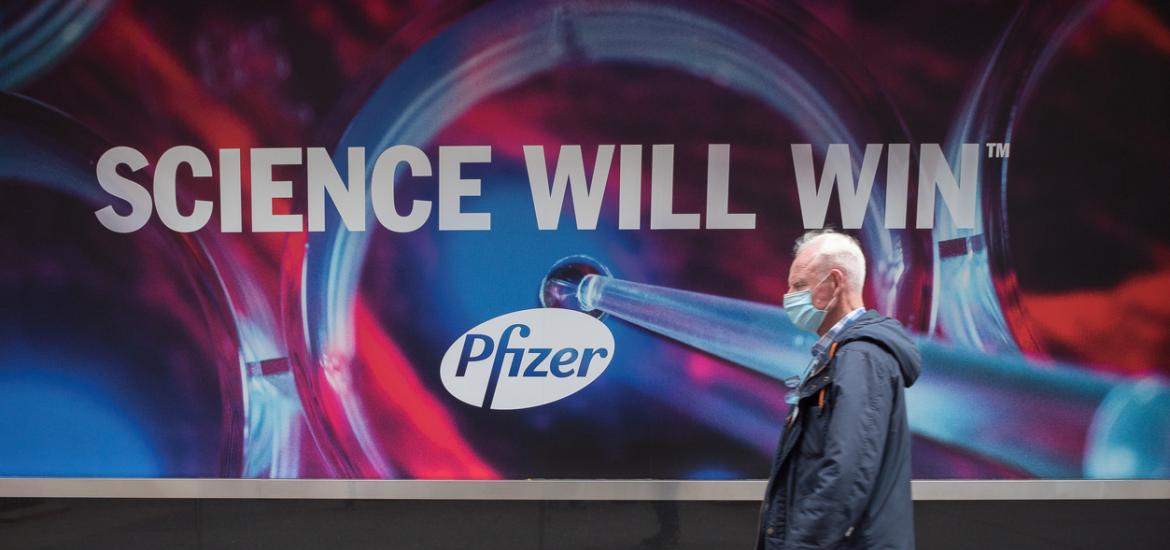
Pfizer doubles down on PD-L1 conjugates
PF-08046037 joins PF-08046054 in clinical development.
PF-08046037 joins PF-08046054 in clinical development.

Not content just with moving its first anti-PD-L1 ADC, PF-08046054, into pivotal development this year, Pfizer has advanced PF-08046037, a second molecule with a similar mechanism, into its first human study. A just unveiled clinicaltrials.gov entry shows this to include combination with sasanlimab across numerous tumour types – an unusual move.
Followers of first-in-human trial initiations will also note the entry of three new PRMT5 inhibitors into phase 1. This marks the progression of yet more molecules with this mechanism, following projects from AstraZeneca (AZD3470), Tango (TNG462 and TNG456) and Bayer (BAY 3713372), in spite of disappointing data with Amgen's AMG 193.
For Pfizer there's a key difference between PF-08046054 and PF-08046037, namely in the payloads that these two conjugates carry. The former is a Seagen-derived asset that uses MMAE (vedotin), while the latter employs a TLR7 agonist, and so can be classified more specifically as an ISAC (immune-stimulating antibody conjugate).
It's likely that PF-08046037 is also derived from the Seagen acquisition, since Seagen is known to have published papers on TLR7/8 agonist payloads, but the approach has seen setbacks elsewhere. Pfizer is one of few big pharma players without a marketed PD-(L)1 MAb, but is known to be pinning its hopes on the ADC approach here.
The group does have a recent phase 3 success to its name with sasanlimab, but this subcutaneous molecule was specifically designed for bladder cancer. As such it might come as a surprise that the new trial of PF-08046037 includes combinations with sasanlimab in NSCLC and head and neck cancer.
Recently disclosed first-in-human studies*
| Project | Mechanism | Company | Trial | Scheduled start |
|---|---|---|---|---|
| CTS3497 | PRMT5 inhibitor | CytosinLab | MTAP-deficient malignancies | 25 Dec 2024 |
| HSK41959 | PRMT5 inhibitor | Haisco Pharmaceutical | MTAP-deleted solid tumours | 11 Apr 2025 |
| PF-08046037 | PD-L1 ADC (TLR7 payload) | Pfizer | +/-sasanlimab in solid tumours | 6 May 2025 |
| MOMA-341 | WRN inhibitor | MOMA Therapeutics | Post-PD-(L)1 MSI-H/dMMR cancers | Jun 2025 |
| DCC-2812/ DP-9149 | GCN2 activator | Ono (ex Deciphera) | Kidney, bladder & prostate cancers | Aug 2025 |
| PEP08 | PRMT5 inhibitor | PharmaEngine | MTAP-deleted solid tumours | 15 Sep 2025 |
Note: *projects newly listed on the clinicaltrials.gov database between 11 and 16 May 2025.
Meanwhile, the woes of Amgen's AMG 193 have clearly not deterred other companies keen to get in on PRMT5 inhibition, a so-called synthetic lethality mechanism.
The latest clinicaltrials.gov listings reveal no fewer than three new PRMT5 inhibitors starting phase 1 studies in the familiar setting of MTAP-deleted cancers. These are CytosinLab's CTS3497, Haisco's HSK41959 and PharmaEngine's PEP08. The first two companies are Chinese, while the last is headquartered in Taiwan.
Two other new phase 1 entrants are of note. MOMA Therapeutics' MOMA-341 has become the latest of several Werner helicase inhibitors to start human trials, but all now have a benchmark against which they can be held up, with Roche's RO7589831, licensed from Vividion, yielding the first clinical data at the recent AACR meeting.
And GCN2 activation, a mechanism linked to inhibition of the heat shock transcription factor HSF1, saw a recent setback from Nuvectis's NXP800. Newly into phase 1 is Ono's GCN2 activator DCC-2812; along with the PERK & GCN2 inhibitor DP-9024 this project came from Deciphera, which Ono acquired a year ago for $2.4bn.
2456













